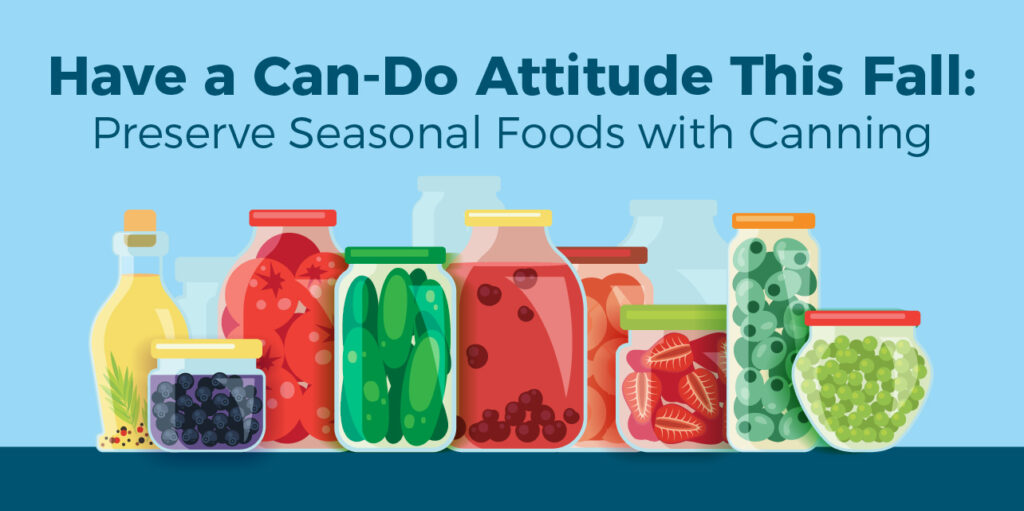
Written by our friends at Green Mountain Energy
Do you love summer farmers’ markets but wish you could use those flavors for a Thanksgiving cobbler? Wish you could reduce the waste from store-bought canned goods? Did your backyard garden give you way more produce than your household can possibly eat before it turns? It’s time to get canning!
Canning isn’t just for your grandparents anymore, but they were certainly onto something—it’s the greenest way to take your pantry to the next level. Home-canned food offers plenty of benefits, like:
– Seasonal produce year-round. Fresh fruits and vegetables found at the height of their season at your local farmers’ market in the summer can make a tasty appearance on your table any time of year.
-Knowing what’s in your food. Since the only thing in your canned food is what you put into it, it’s a good way to avoid artificial additives.
-Room for creativity. You can try out new recipes for jams, soups, salsas and more.
-Eco-friendliness. Canning cuts down on food waste, reduces emissions from transporting food, and minimizes single-use plastics.
-Saving time. Too rushed to make dinner from scratch? Reach for that yummy homemade soup or pasta sauce you canned in advance.
Before you get started, make sure you have the basics on hand:
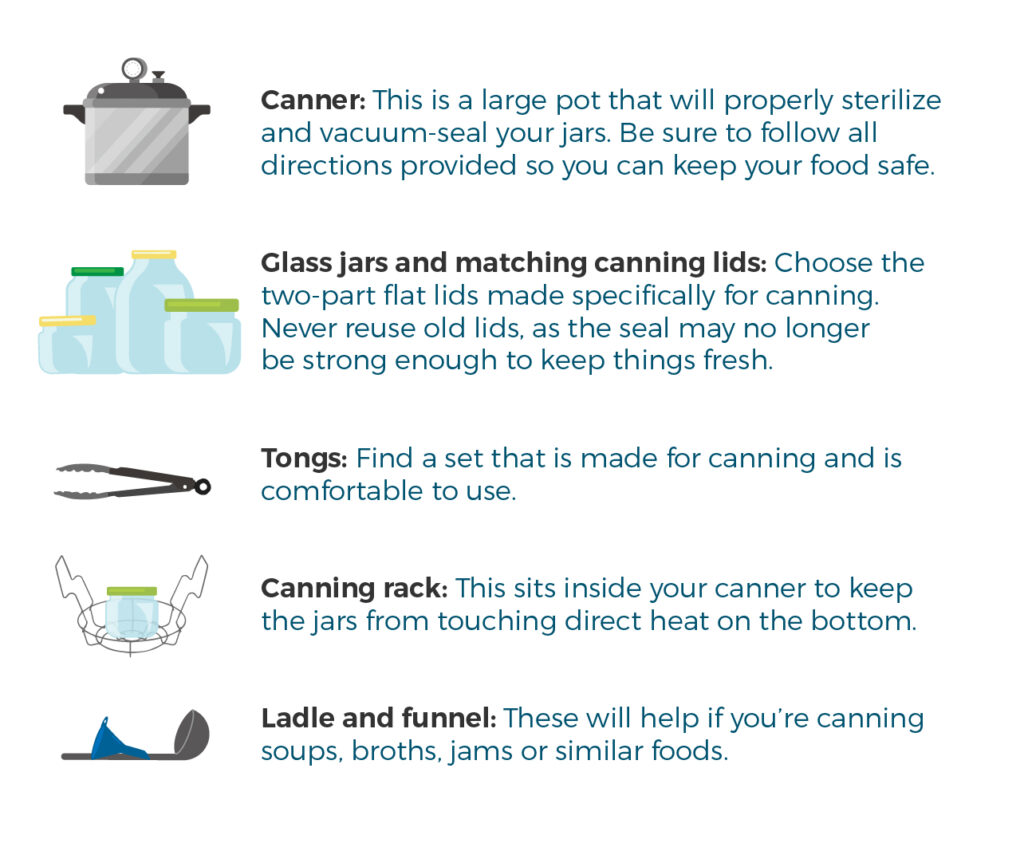
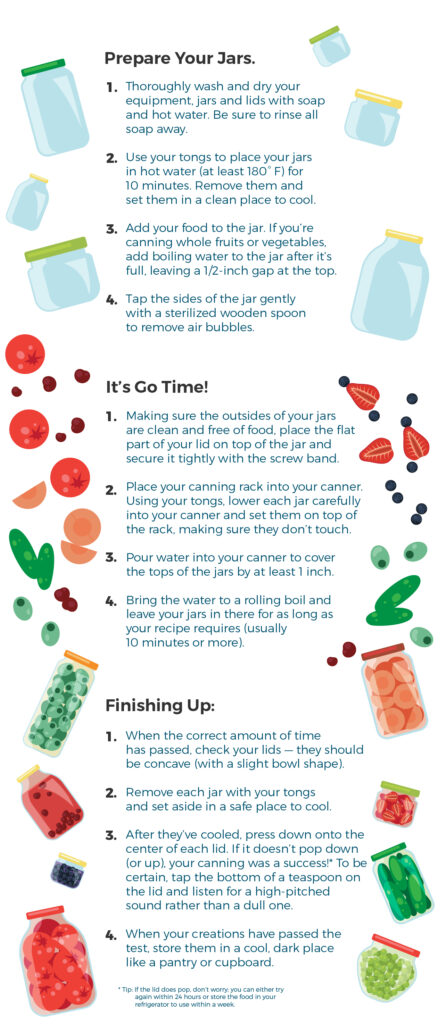
This is just an overview of the canning process. Check out more detailed information from the National Center for Home Food Preservation. We hope you have a great time getting creative and cutting down on food waste with this time-honored activity!
More ways to live sustainably:
Canning is an excellent (and tasty) way to cut back on food waste and plastic use, but your green efforts don’t have to stop there! Since you’re on a roll, see our other simple tips for cultivating an Earth-friendly lifestyle on our blog here.
Our favorite way to live greener is also one of the easiest: choosing to use clean electricity in your home. We’ve partnered with Market 32 to make going green even more rewarding, featuring 100% renewable energy plans that let you save at the checkout line. Learn more here.
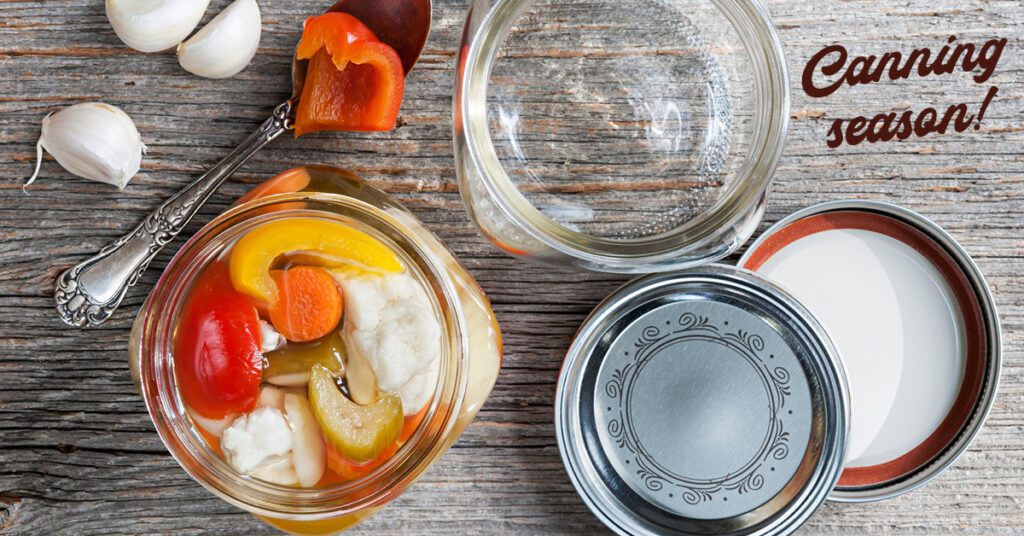
It’s Canning Season!
One of the best parts of summer is easy access to an abundance of fresh, homegrown fruits and vegetables. However, when the colder months roll around we are once again left deprived of these natural delights. Enter canning! Canning is a method of preservation, and the best way to enjoy summertime vegetables throughout the colder months.
Canning is an essential and safe, if done properly, method to food preservation. The canning process involves placing foods such as fruits, vegetables, jams, jellies, pickles, and other preserves, in jars and heating them to a temperature that eliminates micro-organisms that cause the food to spoil. During the heating process, air is driven out of the jar and as it cools a vacuum seal is formed. This seal prevents air from getting back into the jar, preventing these micro-organisms from contaminating the food and leading to successful preservation.
With fall fast approaching, we’d like to share some home canning tips to help you have as much success as possible this year. If your garden has been a success this year, you’ll probably have a good amount of vegetables to can! And if you’re canning from store-bought items, make sure to read your ingredient list closely and beforehand to see if ingredients need to be prepped before the canning process. For example, does your watermelon rind need to be soaked in brine overnight before you can begin the pickling process?
When it comes to filling, experts have said that sterilizing jars and lids is not necessary because all bacteria will be eliminated in the process. Therefore, you can reuse jars from previous years, as long as they are in good condition. You’ll just need new lids to ensure a tight seal. Jars should be washed and dried before they are filled. It’s important to soak your new lids in hot water for ten minutes to soften the rubber edge, and help the lids grip on the top of the jar when the rings are screwed on.
Once the jars have been successfully processed, let them sit, untouched for at least an hour. As the jar cools the lids will sink into the center and you may hear a “ping” sound, indicating the lids have sealed. Store your jars away from direct sunlight, in a cool, dry place. Processed foods typically are good for a year, although many items will not spoil for a longer period of time. If you see mold, discoloration, or smell something funny, discard the food immediately. If a jar’s seal has been compromised discard of the food immediately, and ultimately, when in doubt, throw it out.
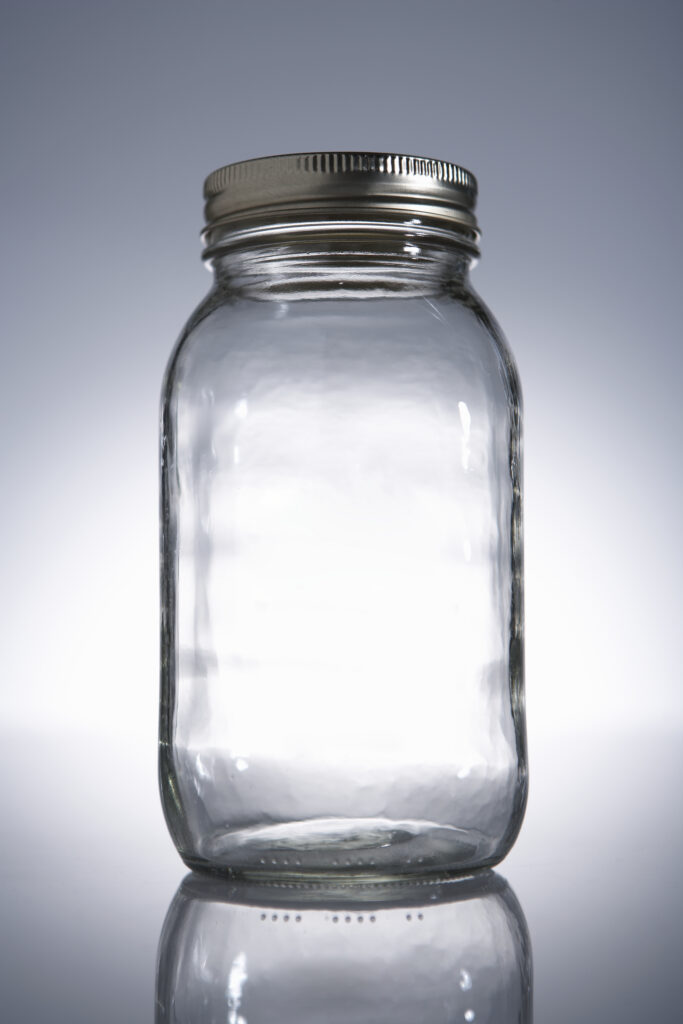
What’s basically the main ingredient in canning? Mason jars! We have them: Order yours from us here.
Happy canning!


